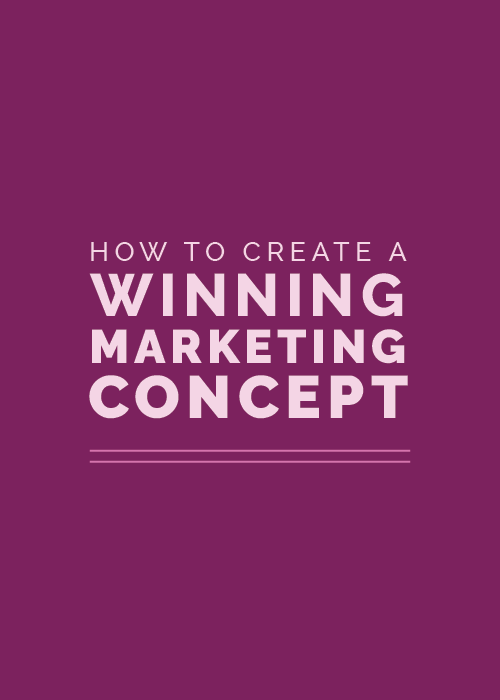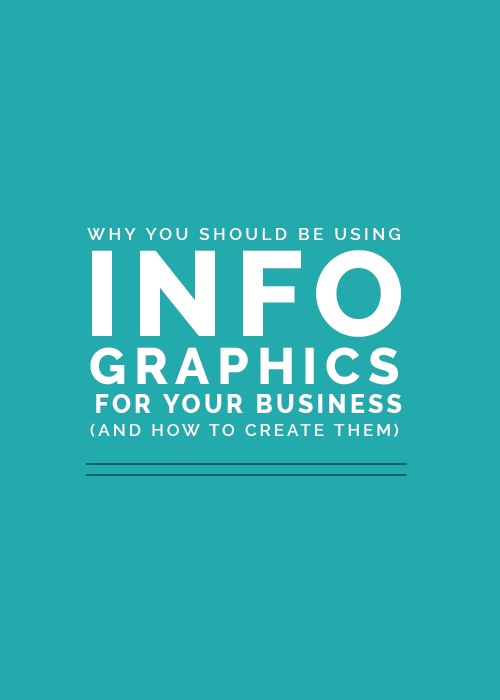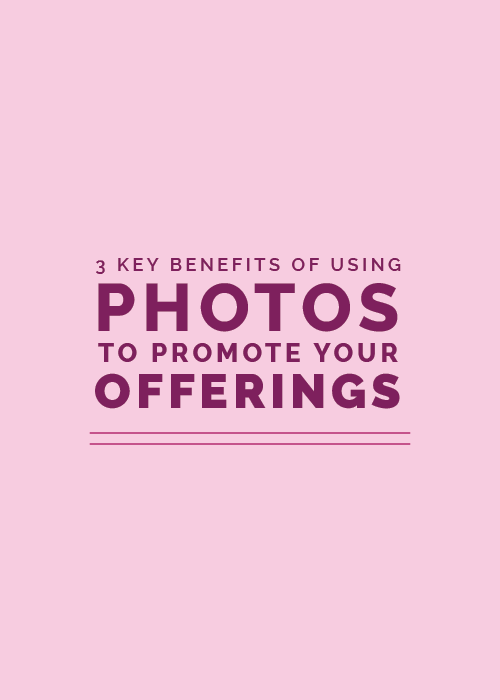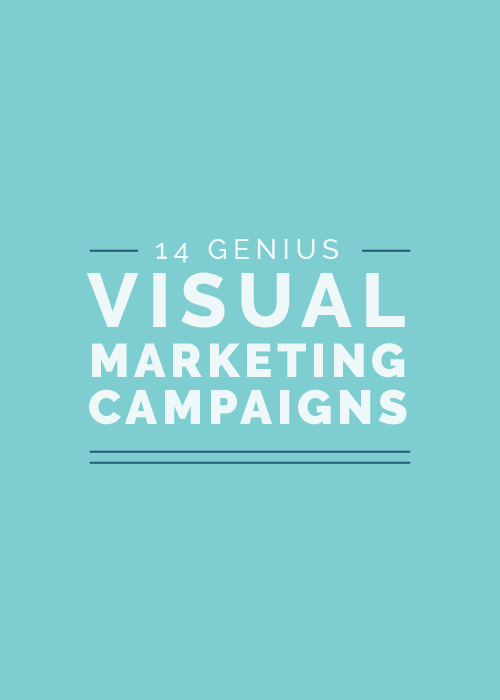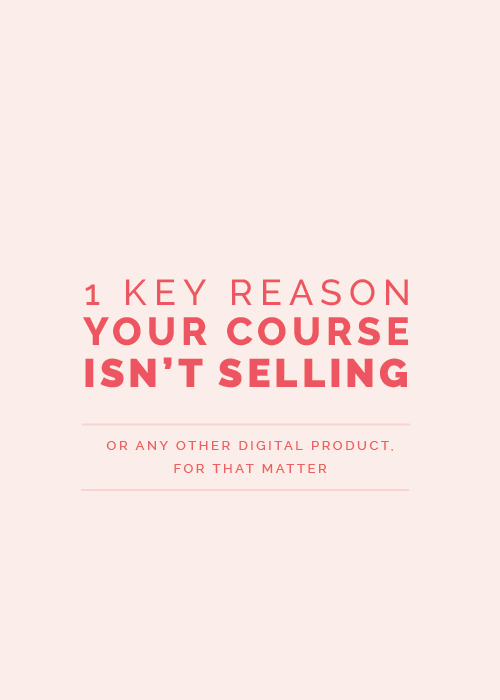“You can put lipstick on a pig, but it’s still a pig.”
Call it a ridiculous saying, but there’s some truth to it. You can try to dress something up and go to great lengths to change its exterior, but it’s still going to be the same on the inside.
The same is true for your marketing efforts. You can (and should) try to dress up your campaign with great visuals, but you’ll come up short if you gloss over a fundamental step: coming up with a solid concept.
That’s why all of those 14 genius visual marketing campaigns I shared a few days ago were so genius; they all started with a fantastic concept that was appropriate and appealing to their audience.
If coming up with a great marketing concept seems a little overwhelming and you don’t know where to start, don’t fret. I have a simple process to share with you that will make this fundamental step much less intimidating (and much more effective!).
1 | Start by coming up with some simple insights about your audience
The point of a visual marketing campaign is to win a potential customer’s attention, highlight your product in a way that appeals to them, and make a sale. In order to do that, you have to have a good understanding of your customers’ needs.
And that’s where “insights” come in.
Insights set the stage for the story you’re about to tell through your campaign. They clearly identify why your customers need the product you’re selling.
Let’s look at a few examples from my previous post:
- For the Dove campaign, an insight would be, “I believe that women should feel beautiful regardless of their size.”
- For the Chipotle campaign, an insight would be, “It’s important to me that I know where my food is being grown and produced.”
- For the Dos Equis campaign, an insight would be, “My greatest fear is that others might consider me to be boring.”
- And for the Apple campaign, an insight would be, “I believe that using a computer should be simple and hassle-free.”
Note that all of these insights aren’t about the products each of these companies are offering; they focus on the customer. Before you ever bring your product or service into the mix, you have to get inside the head of your potential customer.
These insights should capture what your customer thinks, feels, and believes before they ever know anything about your product.
So take some time to switch places with your customer and see things from their perspective. Do a little bit of research if you have to or go so far as interviewing some people within your ideal audience and asking them for feedback. Then sit down and write down as many insights as possible.
Here are some possible sentence starters to help you steer your insights in the right direction:
I believe…
It’s important to me that…
My greatest fear is...
If your audience would nod in agreement if they heard your insights, you’ve found yourself some solid contenders.
2 | Now that you have some insights, let’s bring your product into the mix
While insights focus on your audience, “benefits” focus on your product.
Benefits are your promises to your customer; they demonstrate the value of your offering by highlighting a positive outcome that they will experience if they purchase it.
These statements usually start with “I get…” or “I buy…” and they function almost as a reply to your insights. Let’s pick back up on those examples.
For the Dove campaign our insight was, “I believe that women should feel beautiful regardless of their size.” The benefit would be, “I buy Dove products because they aren’t focused on fitting me into a mold; they highlight the qualities that make me beautiful.”
For the Chipotle campaign our insight was, “It’s important to me that I know where my food is being grown and produced.” The benefit would be, “I don’t have to worry when I eat at Chipotle because I know they commit themselves to serving ‘food with integrity.’” (I understand the irony of this benefit given the recent events going on with Chipotle, but you see what I’m getting at!)
For the Dos Equis campaign, an insight would be, “My greatest fear is that others might consider me to be boring.” The benefit would be, “I drink Dos Equis because it isn’t the boring, expected choice.”
And for the Apple campaign, our insight was, “I believe that using a computer should be simple and hassle-free.” The benefit would be, “I use Apple products because I don’t have to bother with all the options, updates, and maintenance.”
The benefits of your products should answer the insights of your audience. That’s what will make your marketing concept compelling: positioning your offering in a way that responds to your audience’s needs. You have to show them the value.
Once they understand the value, they’ll be much more eager to purchase your product.
Now that you have a list of insights, go through and write a benefit statement that responds to each one (just like I did in the above examples). This part of the process might take you a little bit longer, but it will have a large payoff in the long run if you come up with some accurate, telling statements.
3 | Next, provide some proof
When you boil it down, proper marketing has everything to do with building trust. If someone doesn’t trust you, they certainly won’t buy from you.
Proof encourages belief. In order to effectively market your product and build trust with your potential customers, you have to provide proof that they’ll actually obtain the benefit you’re promising them.
In the marketing world, they refer to this proof as “reasons to believe” or RTBs, for short.
A reason to believe could be a fact about the product, like the statement “If you can’t find what you’re looking for in store, we’ll find it at Kmart.com now and ship it to you for free.”
It could be a reassurance, like “Dollar for dollar, nobody protects you from Mayhem like Allstate agents.”
It could be a product demonstration or even an endorsement or testimonial from celebrities or past customers, both of which were included in the Squatty Potty commercial.
All of the above provide proof about the products, give them reasons to believe and trust the companies behind them, and reassure the potential customer that they’ll carry through on their promise.
Now that you have a benefit statement for each insight, go back through one more time and list 3-5 RTBs per concept. The goal is to cut down any confusion your audience might have about how you’re going to deliver on your promised benefit, so choose RTBs that specifically support that insight/benefit statement.
4 | Build upon what you’ve come up with by telling a story
Now that you’ve worked through your insights, benefits, and RTBs, gain some feedback from others who are either in your industry or fit within your potential customer base to see if they’re accurate and relatable.
This is where you might start weeding out the weakest concepts and narrowing your focus on those that are the most accurate and appealing. You might even ask others to rank them according to which concepts are the most accurate and appealing to them.
If everything checks out, it’s time to develop a few of your concepts by turning them into a story and writing them out in full sentences.
This is your chance to really get creative. If you need some clever inspiration, run back through the 14 Genius Visual Marketing Campaigns post to see how their concepts tell a story. Recruit the help of a clever friend to help you brainstorm. Give yourself some time to think outside the box.
As you’re beefing up your concepts and writing them out in story form, consider ways that you can incorporate those reassurances and reasons to believe. If you’re selling an ecourse, add in the reassurance of your expertise. If you’re selling a custom product, add in reassurances about quality and extra attention to detail.
Once you’ve written a story for each one, go back and edit.
Cut back on the number of words you’ve included by at least 25%. A long, complicated concept won’t catch the short attention span of your audience; your concept should be straightforward, short, and easily understandable.
Before you stick a fork in your concept and call it done, go back one more time and ask for feedback. Read each concept to them and ask them to identify the main point. If they’re struggling to give you a simple answer, go back and make any edits or refinements necessary.
And there you have it! An actionable step-by-step process for coming up with a winning concept.
Once you have this part out of the way, you won’t be stuck “putting lipstick on a pig” with your visuals; your visuals will be icing on the cake of a strong, appealing concept.
And that’s exactly why I created our newest Elle & Company course on Visual Marketing!

